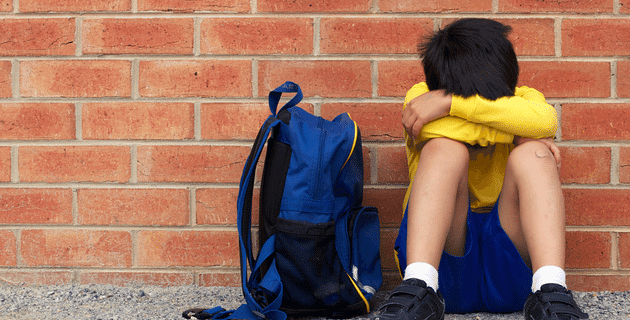Students learn best when they feel safe, comfortable, and valued. But for students who are being bullied, that’s not the case. Bullying is distracting and anxiety-producing. It affects student self-esteem. It creates an unstable environment for the whole class.
As a teacher, you work hard to create that safe space to learn. Here are some strategies that you can incorporate into your teaching and into your classroom to help keep it that way, and prevent bullying before it starts.
Talk with students about bullying.
Most students know the term “bullying,” but the definition can be confusing. Is name-calling considered bullying? How about gossip? Teach your students that bullying involves words or actions that hurt others intentionally, and that often are repeated. Read and review examples of bullying. Teach kids safe ways they can stand up for others or share that they are being bullied. Your school’s guidance counselor can be a great resource and may even teach the lessons.
Pro tip: Assign a creative writing piece about bullying, such as a poem speaking out against it or a story or skit teaching others to help. Assign an art project about bullying. Display the posters around the classroom and school.
Watch for gateway behaviors.
Behaviors that exclude another student or defy authority are often the actions that can escalate into bullying. These include eye-rolling, staring at others for extended periods, teasing or name-calling, and sarcasm. Laughing when students get hurt or encouraging others to laugh also are concerning behaviors. Finally, excluding or ignoring classmates, refusing to work with certain students, and ignoring teacher or staff instructions are actions that can lead to bullying if not addressed. Make sure that students know that these behaviors are unacceptable in your classroom.
Look out for cliques.
You work hard to foster a sense of community in your classroom. Cliques can undo your good work, and isolate students. That’s why it’s important to keep an eye on them. Rotating seating can help. Use teacher-selected groups so that students get a chance to work with everyone. Remember that students don’t learn to be inclusive on their own, so you will need to teach them.
Look for silent signs of bullying.
When a student is being bullied, there may be subtle shifts in behavior. You may notice changes in the child’s schoolwork or class participation. You may observe signs of anxiety or depression. Maybe there are injuries, torn clothing, or damaged property. If you see any red flags, take the time to talk one-on-one with the student. Determine if there is a potential bullying situation, and then take appropriate action.
Listen to students.
Take every student complaint seriously. You may be the first, and only, trusted adult to be told this information. Don’t take the chance that it’s nothing. Intervene thoughtfully with both the victim and the bully separately. Remember that the bully needs guidance too. Know your students’ personalities. What may be a joke to one student could be humiliating to another.
Pro Tip: Create safe and confidential ways that students can report bullying.
Be visible and close by.
You can’t be everywhere all the time, but when you are working, you can put yourself in places to observe potential bullying situations. Stand outside the class in the hallway during class changes. Walk by the bathroom during high-use times, or by out-of-the-way corners, when your schedule allows. Sometimes the presence of an authority figure can help prevent poor behavior.
If you see bullying, intervene right away.
Avoid thinking that “kids will be kids.” That’s not an acceptable reason for bullying. When you see concerning behavior, stop the interaction. Remember that bullying is not the same as conflict. It is an unbalanced situation. Talk to those involved privately and separately. Follow your school’s protocol for bullying. Re-establish your classroom as a safe space. Keep an eye on those involved to help prevent future situations.
Be aware of cyberbullying.
Cyberbullying can happen outside the classroom and affect what happens in the classroom. Teach students how to protect themselves from cyberbullying. Tell them not to share their passwords. They also should not post anything online that would hurt someone or even share it privately with a friend (as that can be shared with all). Tell students to talk to a trusted adult about any messages that make them feel sad or scared.
Many schools have zero-tolerance policies on bullying with severe consequences such as suspension and expulsion. That can make staff and students less likely to report bullying behavior. Talk with your administration about any concerns you may have, and keep lines of communication open with students, parents, and staff. You can be a caring role model in creating safe spaces for all to learn, grow and find their full potential.
This article is furnished by California Casualty, providing auto and home insurance to educators, law enforcement officers, firefighters, and nurses. Get a quote at 1.866.704.8614 or www.calcas.com.
- Graduation – When to Remove Your Child from Your Auto Policy - May 18, 2023
- How to Prevent Catalytic Converter Theft - May 17, 2023
- How Much Does Home Insurance Cost? - May 17, 2023

